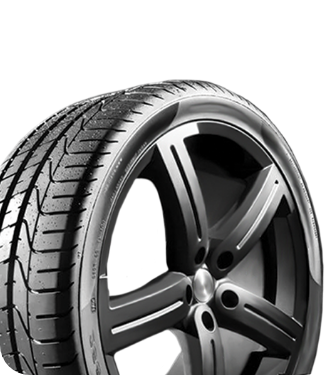

The Impact of Temperature on Tire Pressure
Tires |Tire pressure is one of those crucial aspects of vehicle maintenance that too many drivers may overlook. Yet, it plays a significant role in ensuring road safety and excellent vehicle performance.
Drivers and vehicle owners need to understand how temperature impacts tire pressure because it makes the difference between a smooth, safe ride and a potential hazard. Below, we’ll explain the importance of tire pressure for vehicle safety and performance, the basic science of tire pressure and air temperature, and the seasonal effects every car owner must consider.
Importance of Tire Pressure
Before we get into how air temperature affects the pounds per square inch (PSI) of a tire, let’s uncover precisely why tire pressure matters for vehicles.
Vehicle Safety
Overinflated and underinflated tires reduce a car’s safety, efficiency, longevity, and performance. Therefore, maintaining the correct tire pressure is crucial for vehicle safety.
Underinflated tires have a larger surface area coming into contact with the road. This creates more friction and heat buildup that may cause blowouts or tread separation.
Overinflated tires have a smaller surface area in direct contact with the road. The tires have reduced traction and handling, especially on wet or icy surfaces. These situations put the passengers and other vehicles on the road at risk because the driver isn’t fully in control of the car.
Fuel Efficiency
Tire pressure is another factor in your vehicle’s fuel efficiency. Underinflated tires require more energy to rotate, which results in increased fuel consumption.
For every drop of PSI pressure in a tire, the car must expend more energy to turn the tire and burn more fuel. If you want to maximize your vehicle’s fuel efficiency, properly inflated tires are a must.
Tire Lifespan
Sufficiently inflated tires have a longer lifespan. Underinflated tires degrade faster due to higher friction and heat buildup. This leads to premature wearing, which warrants a tire replacement.
The limited surface area of overinflated tires causes them to wear down more rapidly than if they possessed the proper PSI pressure. Correct inflation will ensure a high-quality performance and a long tire life span.
Vehicle Performance
Lastly, tire pressure affects vehicle performance because the tires cannot grip the road. Improperly inflated tires are not as stable; they decrease the car’s braking distance, worsen handling, and reduce the vehicle’s stability.
Each of these ramifications is dangerous, especially during emergencies or when driving on challenging terrain. Maintaining the correct tire pressure ensures the vehicle will operate without a hitch.
Understanding the Basics of Tire Pressure
To start, it’s important to know what constitutes the ideal tire pressure for your vehicle. This information is typically found in the owner’s manual or on a sticker inside the driver’s door.
The typical range for most passenger vehicles requires the tire pressure to fall between 30 and 35 PSI. Nonetheless, always double-check your vehicle’s owner’s manual to guarantee you’re correctly inflating the tires.
How Temperature Affects Tire Pressure
Even if you properly inflate your vehicle’s tires to the recommended PSI range, the air temperature can have a tremendous impact on tire pressure. Air pressure inside of tires increases as temperatures rise. Conversely, when temperatures drop, the tire pressure decreases.
The science behind this is simple: air expands when it heats up, and it contracts as it cools. A 10°F change in temperature can alter tire pressure by about 1 PSI. For example, if you set your tire pressure to 32 PSI at 70°F, it will drop to approximately 27 PSI at 20°F. This shift might not seem like much. Nevertheless, a small air pressure deviation can greatly affect your vehicle’s performance and safety.
Seasonal Considerations

Winter Chill and Tire Pressure
Drivers must be very vigilant about monitoring tire pressure in the winter. The cold air causes the air inside the tires to contract and results in lower air pressure levels. If you don’t have a garage and must park outside, your vehicle’s tires are more likely to endure pressure changes as temperatures decrease.
This shift in weather can negatively affect the tires’ traction, handling, and fuel efficiency. Not to mention, underinflated tires are susceptible to damage from potholes, which are more prevalent in winter months. To ensure your vehicle operates safely, make a habit of regularly checking the tire pressure, especially after drastic temperature changes.

Summer Heat and Tire Pressure
As temperatures soar during the summer months, drivers may unknowingly face complications due to increased tire pressure. Higher heat levels cause air to expand and tire overinflation, resulting in diminished contact with the road. Compromised traction escalates the risk of blowouts, especially when driving on hot surfaces or at high speeds.
It’s essential for drivers to regularly check and adjust their tire pressure to the vehicle manufacturer’s recommended PSI range. Drivers should monitor tire pressure in the cooler morning or evening hours to get a more accurate reading. By proactively administering tire maintenance during the sweltering summer heat, drivers will establish a safer mode of transportation.
Maintenance for Tire Pressure in Any Climate
To maintain proper tire inflation, check tire pressure at least once a month using a gauge. Always perform this examination when the tires are cold for accurate readings. Adjust the pressure based on the vehicle’s recommended PSI, if they fall outside of the desired pressure range.
Since temperature changes can affect tire pressure, be proactive in checking and adjusting the pressure, as needed. Following these tips will help ensure a safer and more efficient driving experience in any climate.
Tire Pressure Technology and Tools
Today’s technology offers several solutions to effortlessly maintain optimal tire pressure. Tire pressure monitoring systems (TPMS) are standard in many vehicles; they will alert you when the tire pressure drops below the recommended level. If your vehicle’s TPMS warning light activates on your vehicle’s dash, immediately adjust your vehicle’s tire inflation to prevent potential accidents.
Portable air compressors and automatic tire inflators are convenient tools, so you can quickly adjust the tire’s pressure on the go. Some high-tech tire gauges come with digital readouts and built-in inflators, making it easier to produce the correct PSI. These tools can save you time and provide you with peace of mind that your car’s tires are always in top condition.
Keep Your Tires in Top Shape at RNR Tire Express
Understanding tire pressure and how the air temperature affects the tires is important to care for the vehicle’s tires. Whether you need repair tools, tire maintenance services, or you want to swap out old tires for new models, RNR Tire Express is here to help!
The wide selection at our tire shop in McAllen has everything you need to ensure your vehicle’s tires maintain the proper PSI. Browse our inventory online or schedule an appointment with one of our tire experts today!





